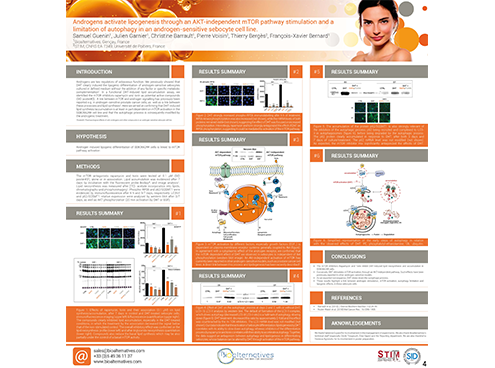
Androgens activate lipogenesis through an AKT-independent mTOR pathway stimulation and a limitation of autophagy in an androgen-sensitive sebocyte cell line.
Acne, Peau grasse, hyperséborrhée et séborégulation, Sebaceous gland regulationAndrogens are key regulators of sebaceous function... A link between mTOR and androgen signaling has previously been reported...as well as a link between these processes and lipid synthesis...Here we aimed at confirming that DHT-induced lipid synthesis/accumulation is at least in part dependent on mTOR activation in the SEBO662AR cell line and that the autophagic process is consequently modified by the androgenic treatment.
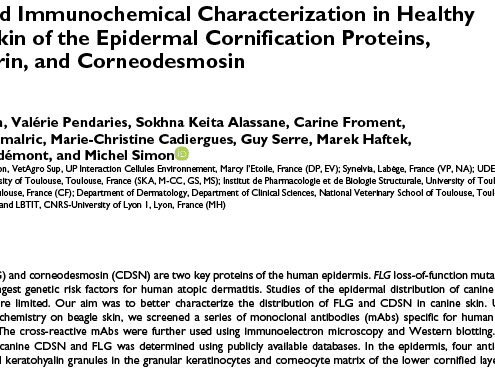
Refined Immunochemical Characterization in Healthy Dog Skin of the Epidermal Cornification Proteins, Filaggrin, and Corneodesmosin
Barrière cutanée et hydratation, Skin barrier and hydration, Veterinary medicine, Veterinary MedicineFilaggrin (FLG) and corneodesmosin (CDSN) are two key proteins of the human epidermis.
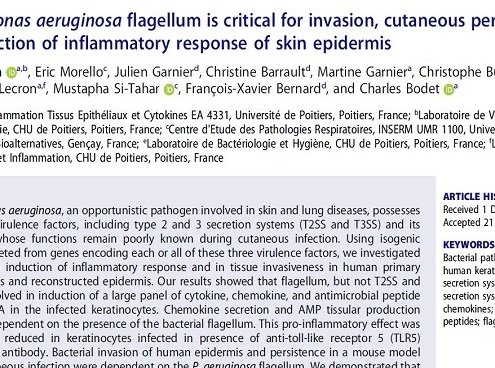
Pseudomonas aeruginosa flagellum is critical for invasion, cutaneous persistence and induction of inflammatory response of skin epidermis
Cosmétique, Microbiome cutané, Skin microbiomePseudomonas aeruginosa, an opportunistic pathogen involved in skin and lung diseases, possesses numerous virulence factors, including type 2 and 3 secretion systems (T2SS and T3SS) and its flagellum, whose functions remain poorly known during cutaneous infection.
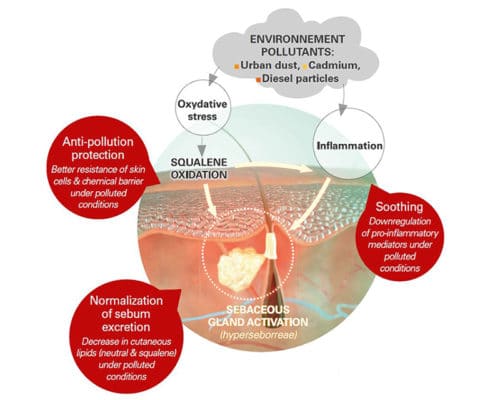
Effects of different kinds of pollutants on the lipidic metabolism of human sebocytes and protective effects of a new macroalgae culture extract
Cosmetics_cat_publi, Peau grasse, hyperséborrhée et séborégulation, Sebaceous gland regulation, Skin protection and immune defense systemSebocytes lipid production are stimulated by pollutants. Ame acts by protecting epidermal cells, human sebocytes and skin from urban dust.
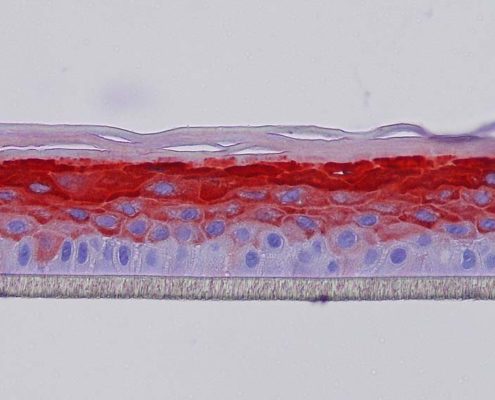
New biological effects of Aphloïol
Cosmetics_cat_publi, Cosmétique, Skin barrier and hydrationIn the present study, we identified new properties of Aphloïol (syn. mangiferin) in improving skin barrier function, especially by promoting keratinocyte differentiation, synthesis of transmembrane glycoprotein and lipid neosynthesis.
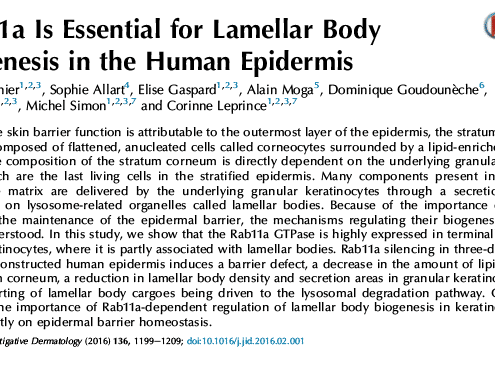
Rab11a Is Essential for Lamellar Body Biogenesis in the Human
Barrière cutanée et hydratation, Skin barrier and hydrationMost of the skin barrier function is attributable to the outermost layer of the epidermis, the stratum corneum, which is composed of flattened, anucleated cells called corneocytes surrounded by a lipid-enriched lamellar matrix.
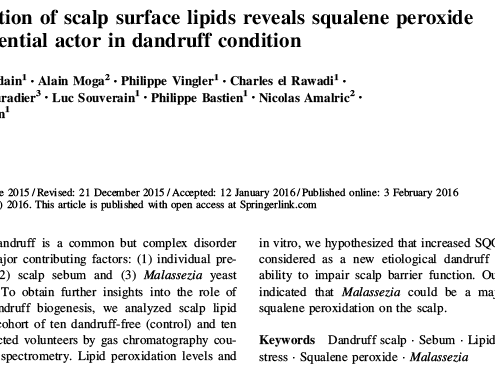
Exploration of scalp surface lipids reveals squalene peroxide as a potential actor in dandruff condition
CheveuxDandruff is a common but complex disorder with three major contributing factors: (1) individual predisposition, (2) scalp sebum and (3) Malassezia yeast colonization.
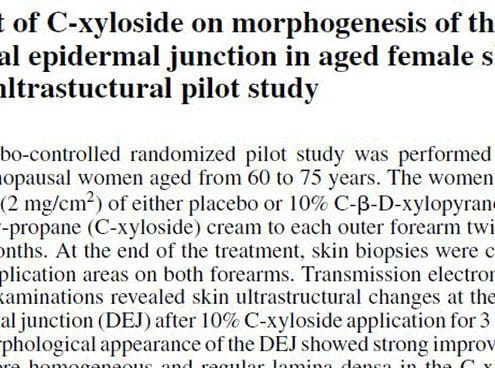
Effect of C-xyloside on morphogenesis of the dermal epidermal junction in aged female skin. An ultrastuctural pilot study
Cosmetics_cat_publi, Cosmétique, Skin ageingThese data suggest that topical C-xyloside application in vivo may be efficient in inducing a better dermal-epidermal cohesion when such a junction is deficient, as is the case in photo-aged or chronologically aged skin. Moreover, a statistically significant increase in CD44 expression was noted in the epidermis of C-xyloside-treated compared to the placebo treated skin areas.
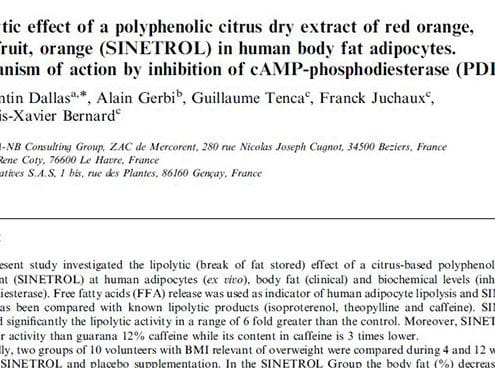
Lipolytic effect of a polyphenolic citrus dry extract of red orange, grapefruit, orange (Sinetrol) in human body fat adipocytes. Mechanism of action by inhibition of cAMP-Phosphodiesterase (PDE)
Cosmetics_cat_publi, CosmétiqueThe present study investigated the lipolytic (break of fat stored) effect of a citrus-based polyphenolic dietary supplement (SINETROL) at human adipocytes (ex vivo), body fat (clinical) and biochemical levels (inhibition of phosphodiesterase).
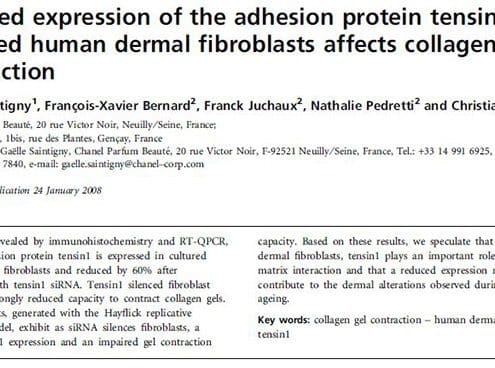
Reduced expression of the adhesion protein tensin1 in cultured human dermal fibroblasts affects collagen gel contraction
Cosmetics_cat_publi, Cosmétique, Skin ageingtensin1 plays an important role in cell-matrix interaction and that a reduced expression might contribute to the dermal alterations observed during skin ageing
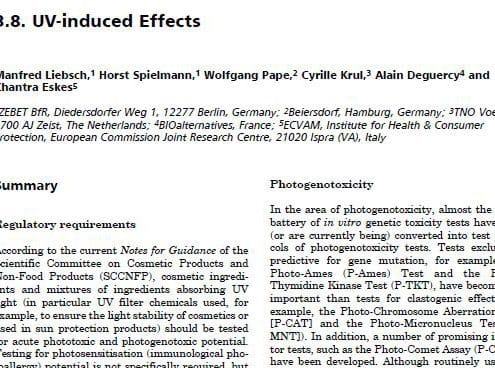
Alternative (non-animal) methods for cosmetic testing: current status and future prospects – UV-induced effects
Cosmetics_cat_publi, Cosmétique, Safety and toleranceCosmetic ingredients and mixtures of ingredients absorbing UV light (in particular UV filter chemicals used, for example, to ensure the light stability of cosmetics or used in sun protection products) should be tested for acute phototoxic and photogenotoxic potential.
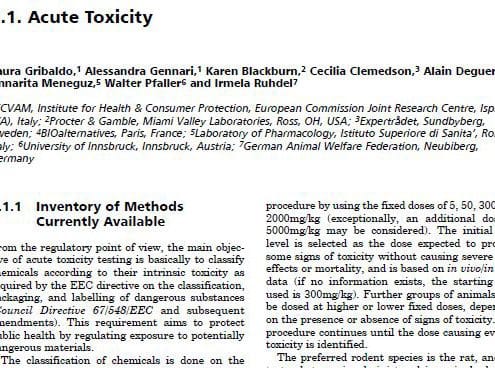
Alternative (non-animal) methods for cosmetic testing: current status and future prospects – Acute toxicity
Cosmetics_cat_publi, Cosmétique, Safety and toleranceFrom the regulatory point of view, the main objective of acute toxicity testing is basically to classify chemicals according to their intrinsic toxicity
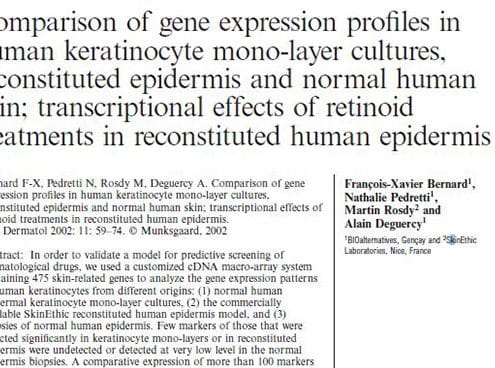
Comparison of gene expression profiles in human keratinocyte mono-layer cultures, reconstituted epidermis and normal human skin; transcriptional effects of retinoid treatments in reconstituted human epidermis
Cosmetics_cat_publi, Cosmétique, Epidermal regenerationIn order to validate a model for predictive screening of dermatological drugs, we used a customized cDNA macro-array system containing 475 skin-related genes to analyze the gene expression patterns in human keratinocytes from different origins.



